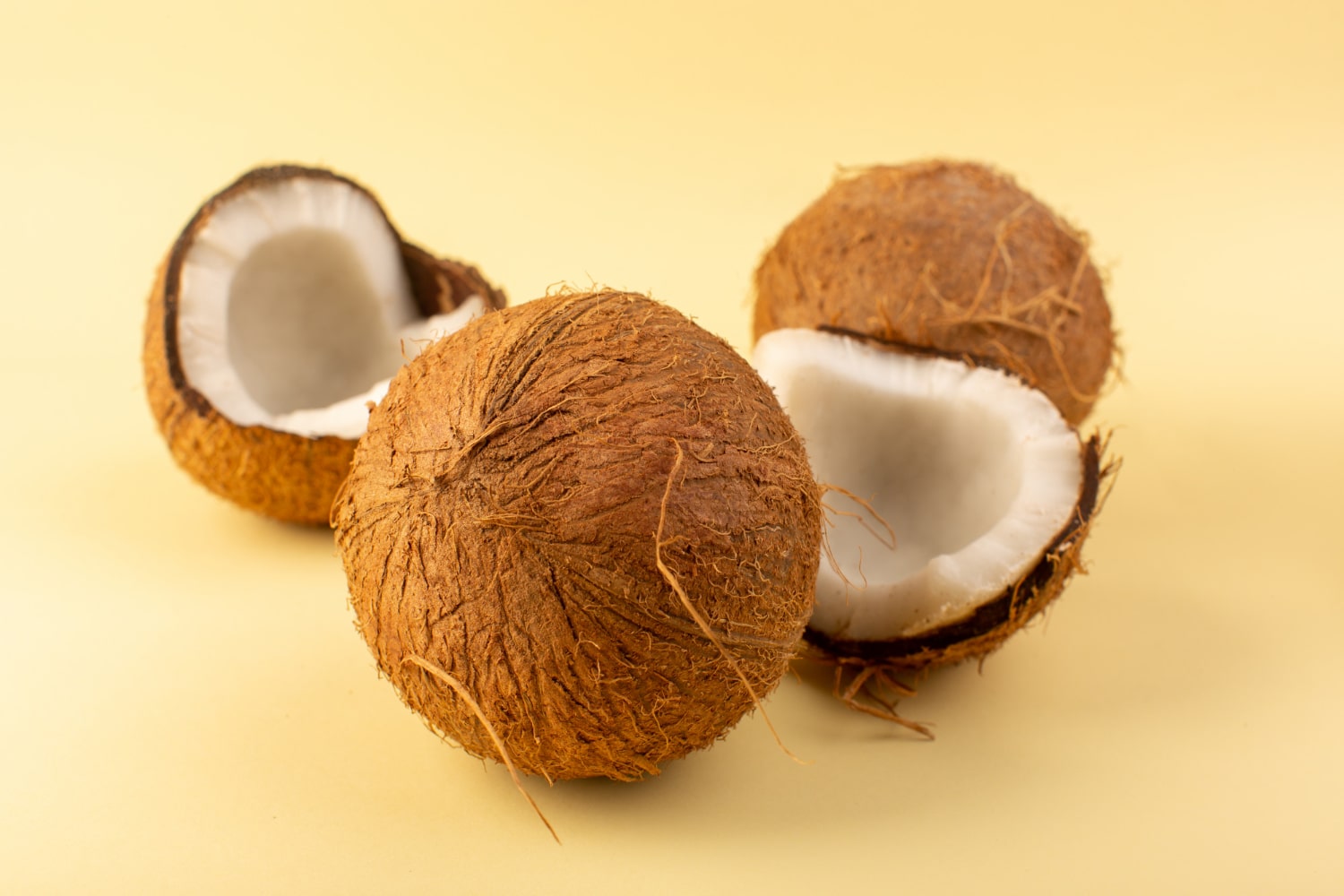Coconuts are not just delicious tropical fruits but also true wonders of nature. They are used in cooking, medicine, cosmetics, construction, and even industry. Thanks to their versatility, coconuts are considered one of the most valuable gifts of nature. While many people are familiar with their taste and appearance, there are plenty of surprising and useful facts you may not know. Below is a collection of fascinating facts about coconuts that are sure to amaze you.
- A coconut is not actually a nut but a drupe, like a peach or a cherry. Its outer fibrous layer, edible flesh, and internal liquid are all parts of a complex fruit. This botanical classification often surprises even experienced biologists.
- The word coconut comes from the Portuguese word coco, meaning face or skull. Early Europeans who saw the three characteristic holes on the shell thought they resembled a monkey’s face. That is how the fruit got its unique name.
- Coconut palms can live for over 100 years and produce fruit for up to 80 of those years. The most productive trees can yield up to 75 coconuts per year, making them extremely valuable to farmers in tropical regions. In parts of Southeast Asia, these trees are considered family heirlooms.
- A single coconut can fall from a height of more than 20 meters without breaking. This is thanks to its triple-layered shell, especially the fibrous middle layer that acts as cushioning. These shock-absorbing properties have inspired engineers to develop impact-resistant materials.
- Coconut water is sterile until the fruit is opened and has been used as a temporary replacement for saline solution. During World War II, it was sometimes used for intravenous hydration in field hospitals. This is one of the most astonishing facts about natural beverages.
- Every part of the coconut palm has a use in everyday life, including its leaves, trunk, roots, and flowers. Leaves are woven into baskets and roofs, trunks are used for building, and roots are used in traditional medicine. There is no part of the tree that goes to waste.
- Coconut oil has a unique composition of fatty acids, making it widely used in both medicine and cosmetics. It has antibacterial properties and is used to treat skin conditions, dry hair, and even whiten teeth. In many countries, it is a staple in home remedies.
- The shell of the coconut is often used as fuel due to its high calorific value. It burns slowly and evenly, providing consistent heat. In rural parts of southern India, coconut shells are used daily for cooking.
- In some countries, trained monkeys help people harvest coconuts. These monkeys climb trees and select ripe fruits to drop, often working faster than humans. This practice is common in Thailand but has recently come under scrutiny for ethical reasons.
- The coconut palm is known as the “tree of life” in many cultures, including in the Philippines and Sri Lanka. It symbolizes vitality, survival, and harmony with nature. It is even used in wedding ceremonies as a symbol of prosperity and blessing.
- Coconut water contains five essential electrolytes: potassium, magnesium, phosphorus, sodium, and calcium. This makes it a natural isotonic drink, especially beneficial after physical exertion. Many athletes prefer coconut water over synthetic sports drinks.
- Coconuts can drift thousands of kilometers across oceans while remaining capable of germination. Their waterproof shell allows them to float for up to 110 days. This is how coconuts naturally spread to remote Pacific islands long before humans arrived.
- The fiber from the coconut’s outer husk is used to make ropes, brushes, mats, and even plant-growing mediums. This fiber, known as coir, is highly resistant to moisture and decay. Its durability makes it valuable in various industries.
- Coconut milk, cream, and sweets are just a few examples of how this fruit is used in cooking. In traditional Asian cuisine, coconut is added to soups, curries, desserts, and beverages. Its sweet taste and creamy texture enhance any dish.
- On some Pacific islands, coconut shells were once used as currency. They were decorated with patterns and used in trade. This demonstrates how deeply coconuts are rooted in local cultures.
- More than 60 million tons of coconuts are produced worldwide each year. The leading producers are Indonesia, the Philippines, and India. Each country has unique traditions surrounding the use of coconuts.
- There are over 80 varieties of coconut palms, including both dwarf and tall types. Some produce small but sweet fruits, while others are cultivated mainly for oil extraction. This variety allows coconuts to be grown in diverse climates.
- In some cultures, coconut flesh is used as a natural antiseptic. It is applied to wounds and cuts because it contains substances that promote healing. This is an example of traditional medicine effectively replacing pharmaceutical products.
- Coconut meat can be processed into flour, which is a gluten-free alternative to wheat flour. It is rich in fiber and suitable for people with celiac disease. Coconut flour is becoming increasingly popular in health-conscious diets.
- During thunderstorms, coconut palms can act as natural lightning rods because their sap conducts electricity. That’s why it is unsafe to shelter under a palm tree during lightning strikes. This is an important safety rule in tropical regions.
These interesting facts about coconuts show just how important and versatile this fruit is in human life. From food to technology, from traditions to ecology, coconuts play a significant role across the globe. Their natural benefits, longevity, and multi-functionality inspire admiration and curiosity. And perhaps even more fascinating facts about this remarkable fruit await discovery.





